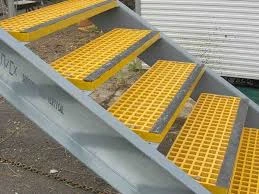
-
 Afrikaans
Afrikaans -
 Albanian
Albanian -
 Amharic
Amharic -
 Arabic
Arabic -
 Armenian
Armenian -
 Azerbaijani
Azerbaijani -
 Basque
Basque -
 Belarusian
Belarusian -
 Bengali
Bengali -
 Bosnian
Bosnian -
 Bulgarian
Bulgarian -
 Catalan
Catalan -
 Cebuano
Cebuano -
 China
China -
 China (Taiwan)
China (Taiwan) -
 Corsican
Corsican -
 Croatian
Croatian -
 Czech
Czech -
 Danish
Danish -
 Dutch
Dutch -
 English
English -
 Esperanto
Esperanto -
 Estonian
Estonian -
 Finnish
Finnish -
 French
French -
 Frisian
Frisian -
 Galician
Galician -
 Georgian
Georgian -
 German
German -
 Greek
Greek -
 Gujarati
Gujarati -
 Haitian Creole
Haitian Creole -
 hausa
hausa -
 hawaiian
hawaiian -
 Hebrew
Hebrew -
 Hindi
Hindi -
 Miao
Miao -
 Hungarian
Hungarian -
 Icelandic
Icelandic -
 igbo
igbo -
 Indonesian
Indonesian -
 irish
irish -
 Italian
Italian -
 Japanese
Japanese -
 Javanese
Javanese -
 Kannada
Kannada -
 kazakh
kazakh -
 Khmer
Khmer -
 Rwandese
Rwandese -
 Korean
Korean -
 Kurdish
Kurdish -
 Kyrgyz
Kyrgyz -
 Lao
Lao -
 Latin
Latin -
 Latvian
Latvian -
 Lithuanian
Lithuanian -
 Luxembourgish
Luxembourgish -
 Macedonian
Macedonian -
 Malgashi
Malgashi -
 Malay
Malay -
 Malayalam
Malayalam -
 Maltese
Maltese -
 Maori
Maori -
 Marathi
Marathi -
 Mongolian
Mongolian -
 Myanmar
Myanmar -
 Nepali
Nepali -
 Norwegian
Norwegian -
 Norwegian
Norwegian -
 Occitan
Occitan -
 Pashto
Pashto -
 Persian
Persian -
 Polish
Polish -
 Portuguese
Portuguese -
 Punjabi
Punjabi -
 Romanian
Romanian -
 Russian
Russian -
 Samoan
Samoan -
 Scottish Gaelic
Scottish Gaelic -
 Serbian
Serbian -
 Sesotho
Sesotho -
 Shona
Shona -
 Sindhi
Sindhi -
 Sinhala
Sinhala -
 Slovak
Slovak -
 Slovenian
Slovenian -
 Somali
Somali -
 Spanish
Spanish -
 Sundanese
Sundanese -
 Swahili
Swahili -
 Swedish
Swedish -
 Tagalog
Tagalog -
 Tajik
Tajik -
 Tamil
Tamil -
 Tatar
Tatar -
 Telugu
Telugu -
 Thai
Thai -
 Turkish
Turkish -
 Turkmen
Turkmen -
 Ukrainian
Ukrainian -
 Urdu
Urdu -
 Uighur
Uighur -
 Uzbek
Uzbek -
 Vietnamese
Vietnamese -
 Welsh
Welsh -
 Bantu
Bantu -
 Yiddish
Yiddish -
 Yoruba
Yoruba -
 Zulu
Zulu
frp fittings
Understanding FRP Fittings A Comprehensive Overview
Fibre Reinforced Polymer (FRP) fittings have emerged as essential components in various industries, thanks to their superior strength, lightweight properties, and resistance to corrosion. These fittings, made from a composite material consisting of a polymer matrix reinforced with fibres such as glass, carbon, or aramid, offer a plethora of advantages that enhance performance and longevity in applications ranging from construction to chemical processing.
What Are FRP Fittings?
FRP fittings are specialized components used to connect pipes or conduits in systems where traditional materials like metal or plastic may not be adequate. They come in various shapes and sizes, including elbows, tees, flanges, and couplings, designed to accommodate different flow directions and junctions in piping systems. The manufacturing process of FRP fittings typically involves molding techniques, allowing for production in various custom shapes and configurations to meet specific engineering requirements.
Key Benefits of FRP Fittings
1. Corrosion Resistance One of the most significant benefits of FRP fittings is their resistance to chemical corrosion. Unlike metal, which can rust and degrade when exposed to harsh chemicals or moisture, FRP materials do not corrode. This property makes them ideal for industries such as wastewater treatment, chemical processing, and marine applications where environmental conditions can be severe.
2. Lightweight FRP fittings are notably lighter than their metal counterparts, contributing to a reduction in overall weight for piping systems. This lightweight property facilitates easier handling and installation, which can lead to lower labour costs and quicker project completion times.
frp fittings

3. High Strength-to-Weight Ratio The unique structure of FRP provides a high strength-to-weight ratio, allowing for robust performance under considerable stress without compromising on weight. This characteristic is especially valuable in industries where structural integrity is critical, such as in construction and aerospace.
4. Thermal and Electrical Resistance FRP fittings offer excellent thermal insulation, decreasing the risk of heat loss in thermal systems and providing energy efficiency. Additionally, their non-conductive properties make them suitable for electrical applications, where preventing electrical short circuits is essential.
5. Customizability FRP fittings can be manufactured to meet specific requirements, including various sizes, shapes, and mechanical properties. This flexibility allows engineers and designers to create custom solutions tailored to unique applications, enhancing system efficiency.
Applications of FRP Fittings
Owing to their advantageous properties, FRP fittings find applications in a diverse range of industries. In construction, they are used in the building of infrastructure that requires materials resistant to environmental wear. The chemical industry employs these fittings for piping systems that transport corrosive substances, minimizing the risk of leaks and failures. In the oil and gas sector, FRP fittings are utilized for lining and repairing pipelines, ensuring safe and efficient transportation of resources.
Conclusion
In conclusion, FRP fittings represent a forward-thinking solution for modern engineering challenges. Their durability, lightweight nature, and resistance to various environmental factors make them an ideal choice in many industries. As technology continues to advance, the applications and benefits of FRP fittings are expected to expand, solidifying their essential role in the future of industrial design and construction. By embracing these innovative materials, industries can achieve greater efficiency, sustainability, and safety.
Latest news
-
Exploring the Benefits of Top Hammer Drifter Rods for Enhanced Drilling PerformanceNewsJun.10,2025
-
High-Precision Fiberglass Winding Machine for GRP/FRP Pipe Production – Reliable & Efficient SolutionsNewsJun.10,2025
-
FRP Pipes & Fittings for Shipbuilding - Corrosion-Resistant & LightweightNewsJun.09,2025
-
Premium FRP Flooring Solutions Durable & Slip-ResistantNewsJun.09,2025
-
Premium Fiberglass Rectangular Tanks Durable & Lightweight SolutionNewsJun.09,2025
-
Tapered Drill String Design Guide Durable Performance & UsesNewsJun.09,2025









